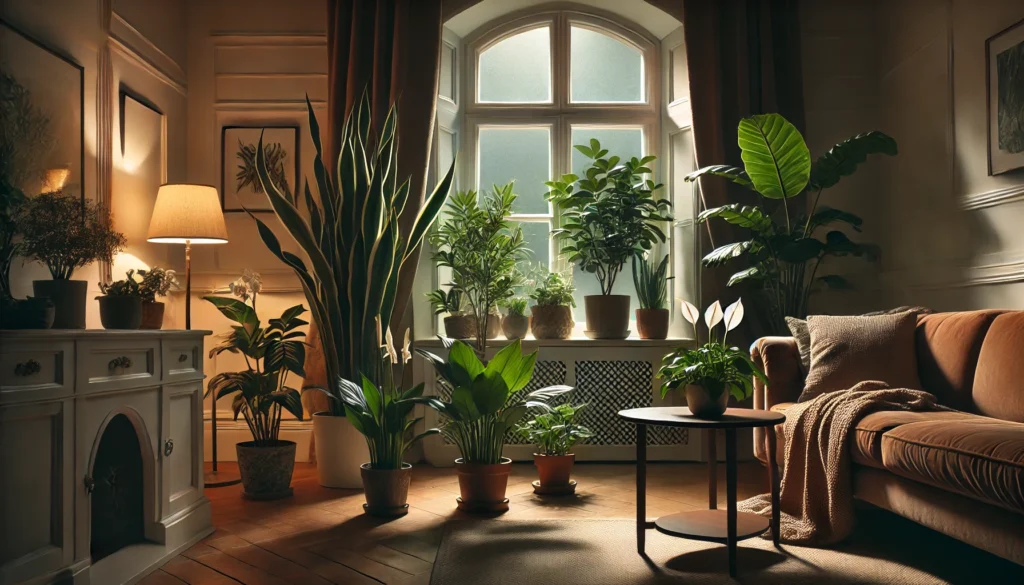
Top 10 Best Indoor Plants for Poorly Lit Homes: Low-Light Solutions for Your Space
Struggling to bring some greenery into your home but worried about the lack of sunlight? You’re not alone! Many of us face the challenge of brightening up poorly lit spaces, but the good news is, there are plenty of plants that thrive in low light conditions. In this article, we’ll introduce you to the best indoor plants for poorly lit homes, perfect for adding a touch of nature to those darker corners. These plants not only survive in minimal light, but they can also enhance the ambiance of your home without much effort or upkeep. Let’s dive into the top choices that will thrive even in low-light environments!
Table of Contents
ToggleUnderstanding Low-Light Conditions in Your Home
Low-light conditions in your home refer to areas where natural light is limited, such as rooms with small windows, spaces facing away from the sun, or areas with heavy curtains. Understanding these conditions is crucial for choosing the right plants and ensuring they thrive.
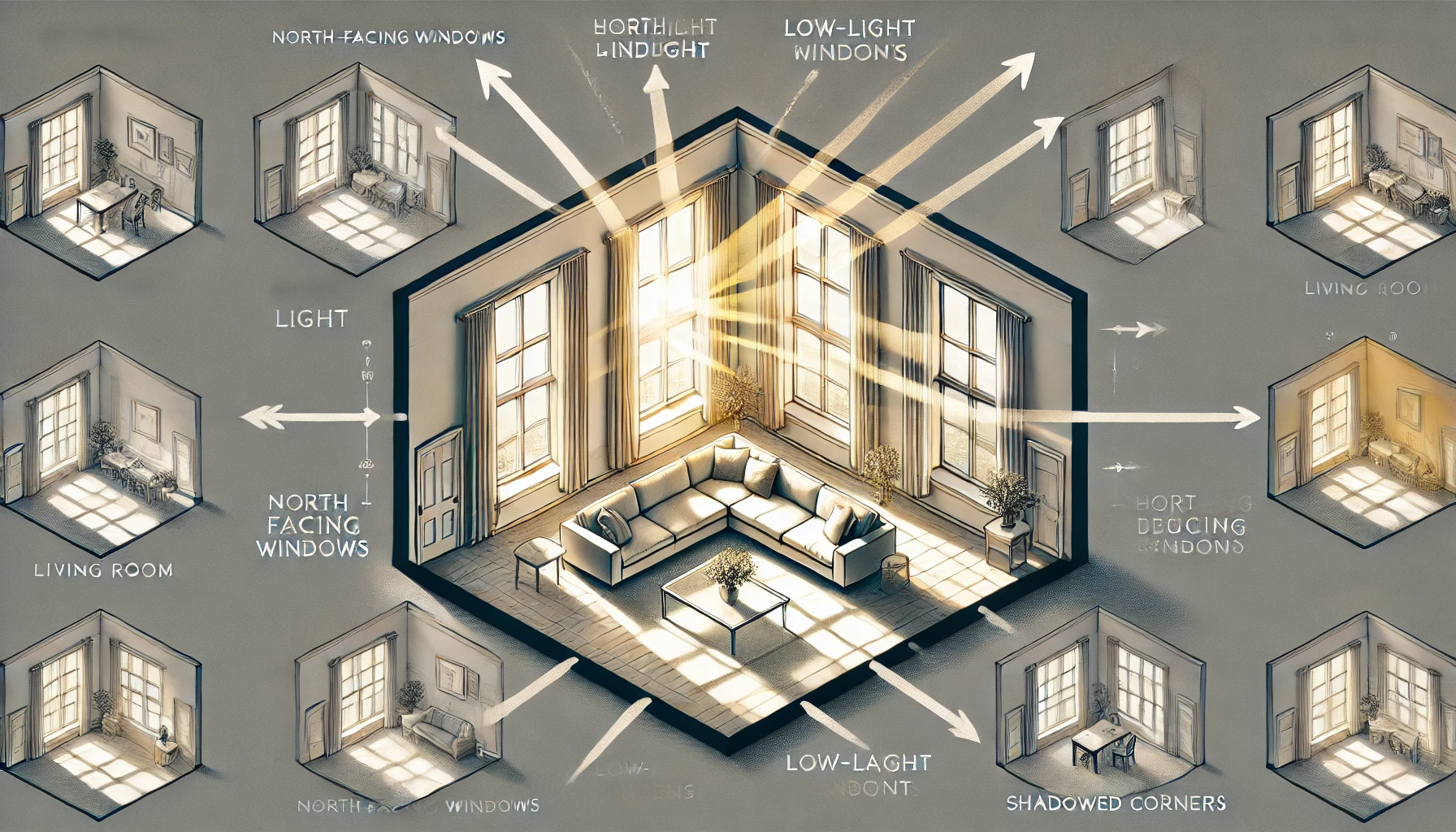
What Defines Low-Light? Low light means the area doesn’t receive direct sunlight but may get indirect light or none at all. If you can read a book without turning on a light, the space likely offers low light.
Why Low Light Matters for Plants Plants use light to photosynthesize, producing the energy they need to grow. In low-light conditions, plants may grow more slowly, have smaller leaves, or become leggy as they stretch toward available light.
Identifying Low-Light Areas in Your Home To identify low-light areas, observe how much sunlight each room gets throughout the day. North-facing rooms or those in the center of your home typically receive less natural light. Rooms with sheer curtains or blinds may also be considered low-light environments.
Selecting the Right Plants Plants that thrive in low-light conditions include species like the Cast Iron Plant, Snake Plant, and Peace Lily. These plants have adapted to survive with minimal light and can still grow and bloom under these conditions.
Maximizing Low Light To enhance light in low-light rooms, consider using reflective surfaces, such as mirrors, or strategically placing plants near windows. Artificial grow lights can also help supplement natural light, providing the energy plants need to thrive.
By understanding low-light conditions and choosing the right plants, you can enjoy a lush, green indoor space, even without abundant sunlight.
Key Considerations When Choosing Plants for Low Light
When selecting plants for low light environments, it’s essential to choose varieties that thrive in minimal sunlight. Here are key factors to keep in mind:
Look for Shade-Tolerant Plants: Plants that naturally grow under tree canopies or in shaded forest floors are ideal for low light spaces. These plants are adapted to survive with limited sunlight and can thrive in dim conditions.
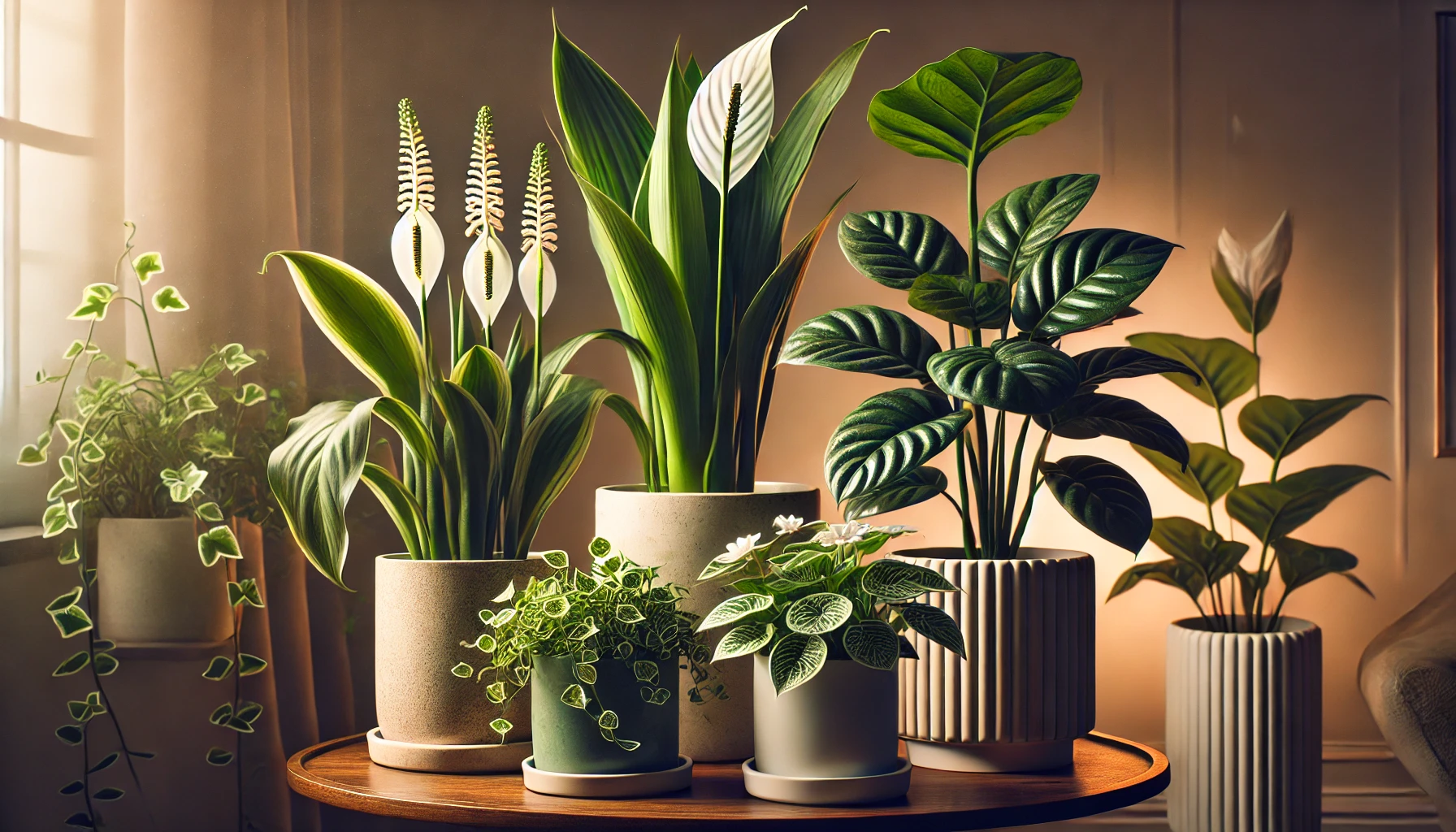
Consider Leaf Structure: Plants with dark green or broad leaves are generally better suited for low light because they can absorb more light. Look for plants like the Cast Iron Plant or Snake Plant, which are designed to make the most of limited sunlight.
Avoid Flowering Plants: Flowering plants typically need more light to produce blooms. For low-light environments, it’s better to focus on foliage plants, which are often more forgiving and adaptable to shade.
Watering Needs: In low light, plants typically require less water as their growth slows down. Overwatering is a common mistake, so be sure to check the soil moisture before watering. Plants like the ZZ Plant or Pothos prefer a more drought-tolerant approach.
Choose Slow-Growing Varieties: Plants that grow slowly are a great choice for low-light areas, as they don’t require as much energy. Look for options that don’t demand quick growth to stay healthy, like the Peace Lily.
Consider Temperature: Many low-light plants also thrive in moderate indoor temperatures, making them suitable for a wide range of home or office settings. Ensure the temperature stays consistent, as drafts or extreme conditions can stress low-light plants.
By keeping these considerations in mind, you can select the right plants that will flourish in your low light spaces, adding greenery without the need for direct sunlight.
Top 10 Best Indoor Plants for Poorly Lit Homes
If your home lacks natural light, you can still enjoy the beauty of indoor plants. Some plants thrive in low light, making them perfect for darker rooms or spaces with minimal sunlight. Here are the top 10 indoor plants that do well in poorly lit environments:
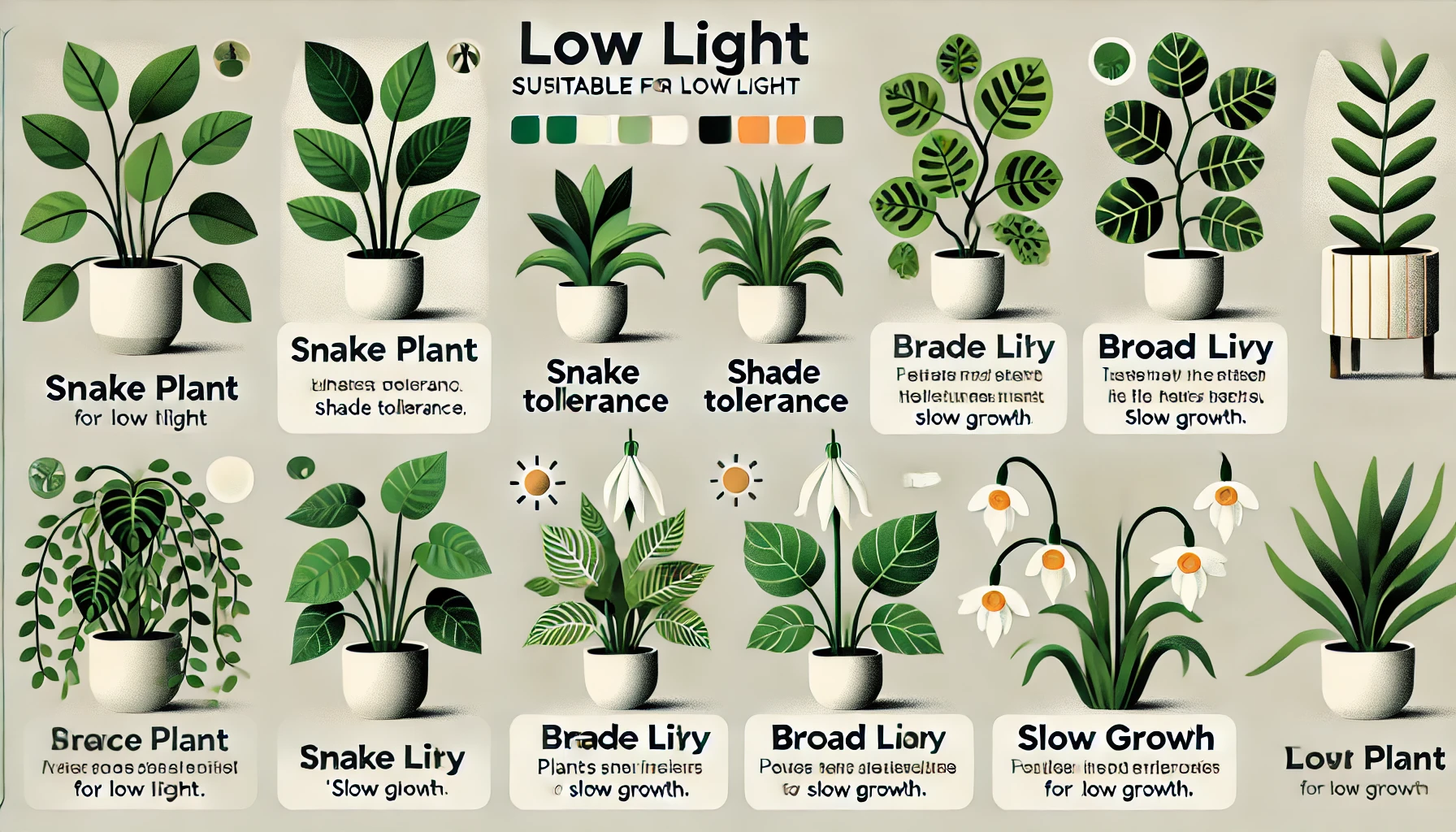
Snake Plant (Sansevieria trifasciata):
The Snake Plant is one of the toughest houseplants, able to tolerate low light and irregular watering. It’s also a natural air purifier.
ZZ Plant (Zamioculcas zamiifolia):
The ZZ Plant thrives in low light and can go weeks without water. Its waxy, dark green leaves add elegance to any space.
Cast Iron Plant (Aspidistra elatior):
True to its name, the Cast Iron Plant is incredibly hardy. It thrives in low to moderate light and requires minimal care.
Peace Lily (Spathiphyllum):
Peace Lilies are well-known for their air-purifying qualities and ability to bloom in low light. They prefer indirect light and need consistent watering.
Pothos (Epipremnum aureum):
Pothos is a fast-growing vine that tolerates low light and neglect. It can be trained to grow on trellises or left to cascade over containers.
Spider Plant (Chlorophytum comosum):
Spider Plants adapt to various light conditions, including low light. They’re easy to care for and propagate quickly.
Philodendron:
Philodendrons are hardy plants that can thrive in low-light settings. Their trailing vines and heart-shaped leaves make them a popular choice for hanging baskets.
Dracaena (Dracaena spp.):
Dracaenas are well-suited for dim light and are available in a variety of types. They’re perfect for brightening up corners with minimal sunlight.
Chinese Evergreen (Aglaonema):
The Chinese Evergreen is ideal for low-light conditions and is known for its attractive foliage. It requires very little maintenance.
Parlor Palm (Chamaedorea elegans):
This palm thrives in low light and adds a tropical vibe to your home. It’s low-maintenance and can grow well in shady indoor spaces.
These plants are excellent choices for bringing greenery into spaces with limited sunlight. With the right care, they’ll flourish even in the dimmest rooms.
Tips for Maintaining Healthy Plants in Low Light
Maintaining healthy plants in low light can be challenging, but with the right care, your plants can thrive. Here are some expert tips to help you succeed:
Choose Low-Light Tolerant Plants
Certain plants are naturally adapted to low-light conditions. Look for varieties like the Cast Iron Plant, Snake Plant, and ZZ Plant. These species can survive with minimal sunlight and still grow strong.
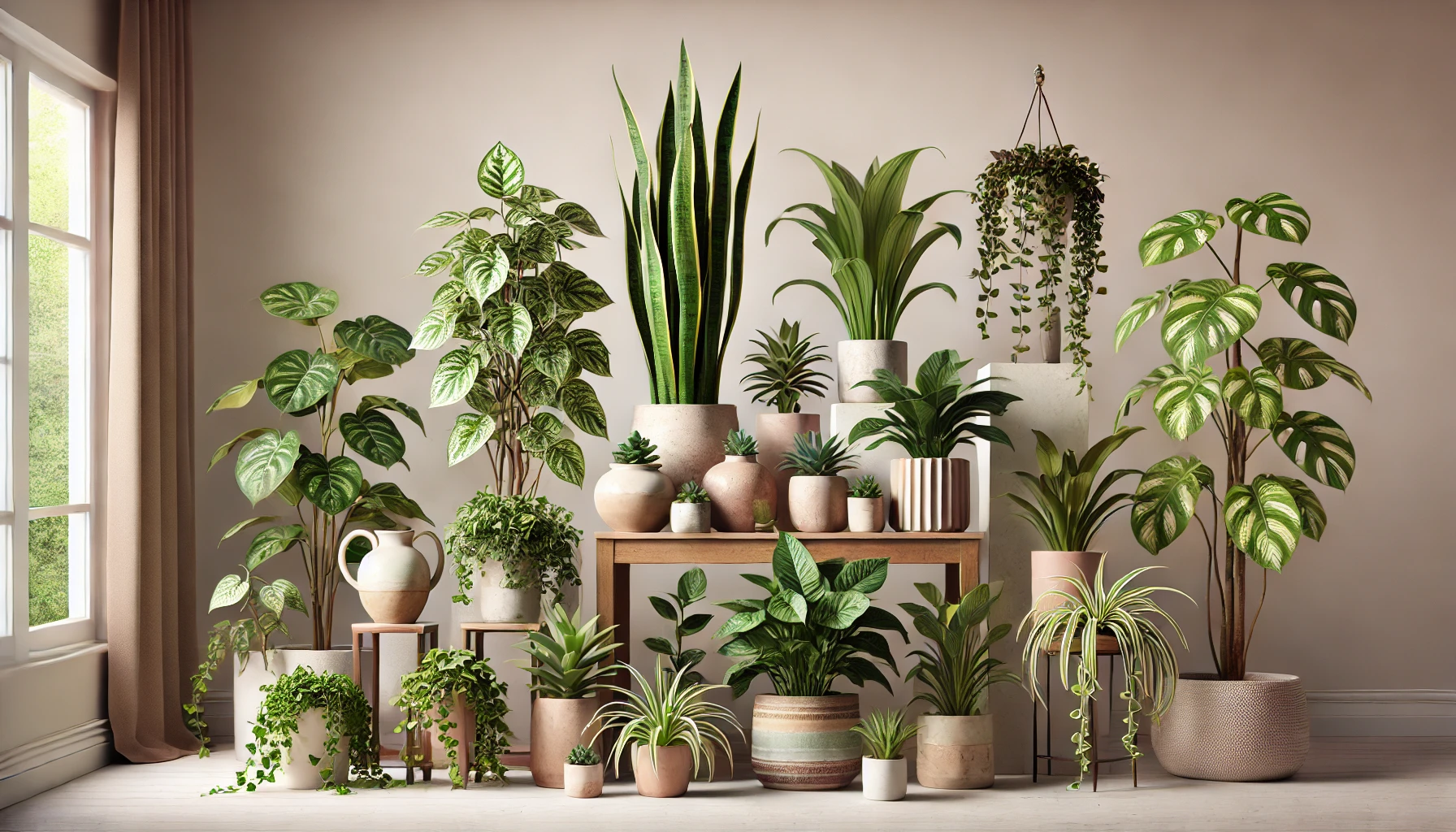
Optimize Available Light
Place plants near windows where they can receive indirect light. Even low light can be boosted with sheer curtains or reflective surfaces. Avoid direct sunlight, which can scorch leaves.
Adjust Watering Habits
In low light, plants require less water because their growth slows down. Water only when the soil feels dry to the touch, as overwatering can lead to root rot.
Use Proper Potting Soil
Ensure your plants have well-draining soil to prevent excess moisture retention. This is especially important in low-light conditions where plants are more susceptible to root rot.
Keep the Temperature Steady
Low light often comes with cooler temperatures. Ensure your plants are kept in a room with a consistent temperature, avoiding sudden drafts or heat sources like radiators.
Increase Humidity
Low light environments can also be dry. Increase humidity by misting plants, using a humidifier, or placing plants on a shallow tray with water and pebbles to help them thrive.
Fertilize Lightly
Plants in low light grow more slowly, so they don’t need as much fertilizer. Feed them with a diluted, balanced fertilizer every 4-6 weeks during the growing season to promote healthy growth.
Clean Leaves Regularly
Dust can block light and hinder photosynthesis. Wipe down your plants’ leaves gently with a damp cloth to ensure they receive maximum light.

By following these tips, you can create the perfect environment for plants to flourish, even in low light settings.
Common Mistakes to Avoid with Low-Light Plants
Low-light plants are a great way to bring greenery into your home, but caring for them requires some attention to avoid common mistakes. Here are the key pitfalls to watch out for:
Overwatering:
One of the most frequent mistakes with low-light plants is overwatering. In low light, these plants grow more slowly, requiring less water. Always check the soil’s moisture level before watering—if the top inch is dry, it’s time to water.
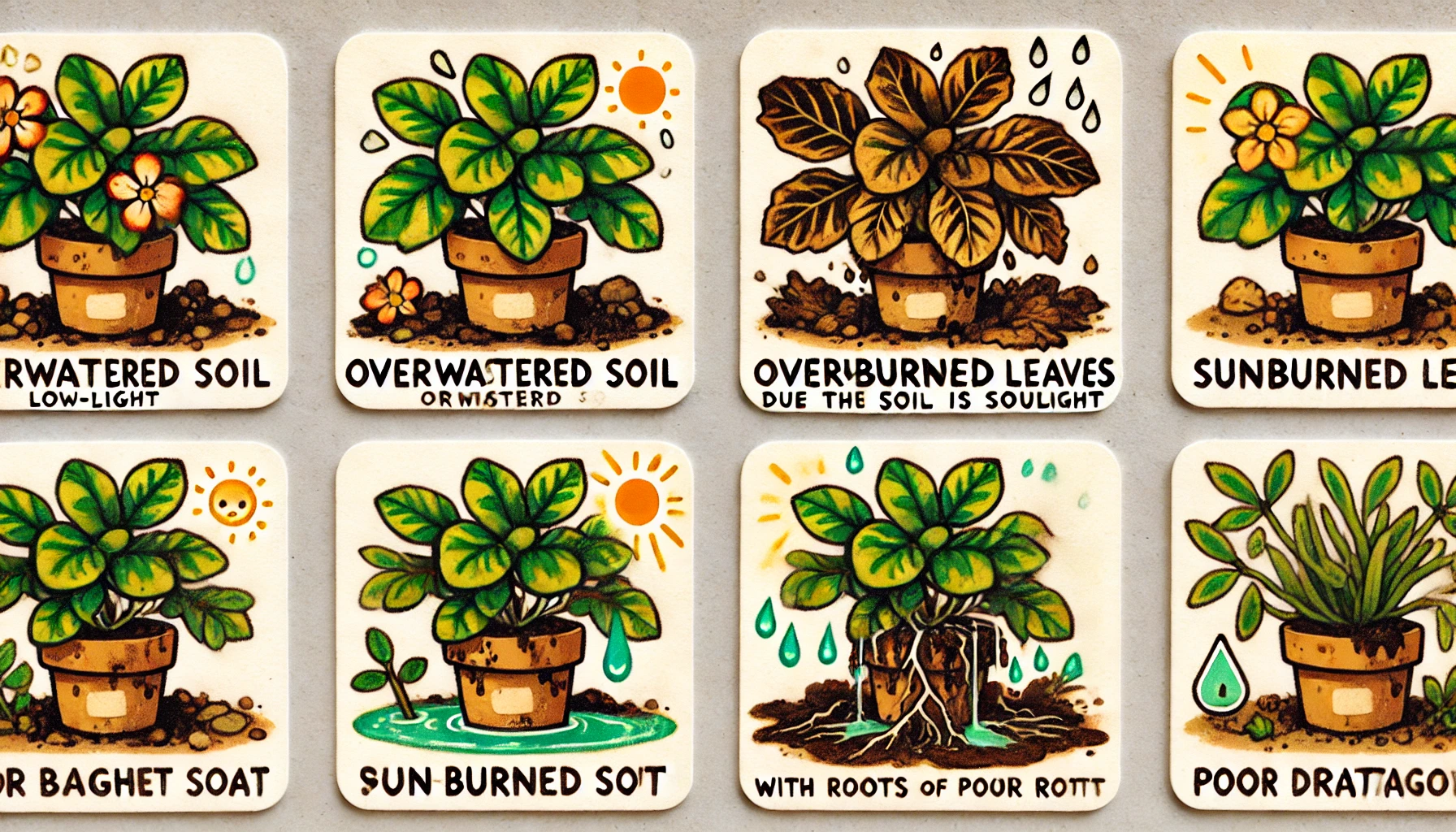
Too Much Direct Sunlight:
While low-light plants thrive in indirect light, placing them in direct sunlight can cause leaf scorch. Keep these plants away from bright windows to avoid damaging their delicate foliage.
Poor Drainage:
Low-light plants are sensitive to waterlogging, which can lead to root rot. Always ensure your pots have proper drainage holes to allow excess water to escape. Use well-draining soil to help prevent stagnant water.
Not Rotating the Plant:
Plants in low light tend to lean toward the light source, causing uneven growth. Rotate your plant regularly to ensure even exposure to light and promote balanced growth.
Not Cleaning the Leaves:
Dust can accumulate on the leaves of low-light plants, blocking light absorption. Gently wipe the leaves with a damp cloth every few weeks to help them breathe and absorb light more efficiently.
Ignoring Fertilization:
Even low-light plants need nutrients, but they don’t require as much fertilization as those in bright light. Use a balanced, diluted fertilizer every 4-6 weeks during the growing season to keep your plants healthy.
By avoiding these common mistakes, you’ll set your low-light plants up for success, helping them thrive with minimal effort.
Finding the right indoor plants for poorly lit homes can be a game-changer for anyone looking to add some greenery to their space without the hassle of constant care and attention. The plants listed in this article are all excellent choices for low-light conditions, offering both beauty and low-maintenance appeal. Whether you’re a beginner or an experienced plant parent, these resilient options will thrive in your home with minimal effort.
Remember, the key to success in maintaining indoor plants in low light is choosing the right species, understanding their care needs, and being mindful of their growth patterns. With a little knowledge and the right tools, even the dimmest corners of your home can flourish with lush, vibrant greenery.
So, go ahead and experiment with these plants to find the perfect match for your home. Your indoor garden awaits – even in the darkest spaces!
Frequently Asked Questions(FAQ)
What are the best indoor plants for poorly lit homes?
The best indoor plants for poorly lit homes include low-light tolerant plants like the Snake Plant, ZZ Plant, Pothos, Peace Lily, and the Chinese Evergreen. These plants thrive in low-light conditions and require minimal maintenance.
Can indoor plants grow without direct sunlight?
Yes, many indoor plants are specifically adapted to low-light conditions and can thrive without direct sunlight. Plants such as the Snake Plant, Spider Plant, and Pothos are great examples of low-light indoor plants that still grow beautifully with indirect light.
How often should I water indoor plants in low light?
Plants in low-light conditions generally require less frequent watering. It’s important to let the soil dry out between waterings to prevent overwatering. Always check the moisture level in the soil before watering to ensure you’re not drowning the plant.
How do I take care of indoor plants in dark rooms?
To take care of indoor plants in dark rooms, ensure that you place them in the brightest part of the room where indirect sunlight is available. Keep their soil moist but not soggy, and clean the leaves regularly to ensure they can still absorb available light.
Do indoor plants need artificial light in poorly lit homes?
Some indoor plants can benefit from artificial light in poorly lit homes, especially if they are placed far from windows. You can use grow lights to provide additional light, but many low-light plants will do well with just the natural ambient light available.
How can I tell if my indoor plant is getting too little light?
If your plant’s leaves turn yellow, become leggy, or stop growing altogether, it may not be getting enough light. Moving your plant closer to a light source or adding artificial light can help it thrive.
Are succulents suitable for poorly lit homes?
Most succulents require more sunlight than low-light indoor plants. While a few varieties may tolerate lower light, it’s generally best to place them in areas that receive direct or bright indirect light. For poorly lit spaces, consider choosing plants like the ZZ Plant or Snake Plant instead.
